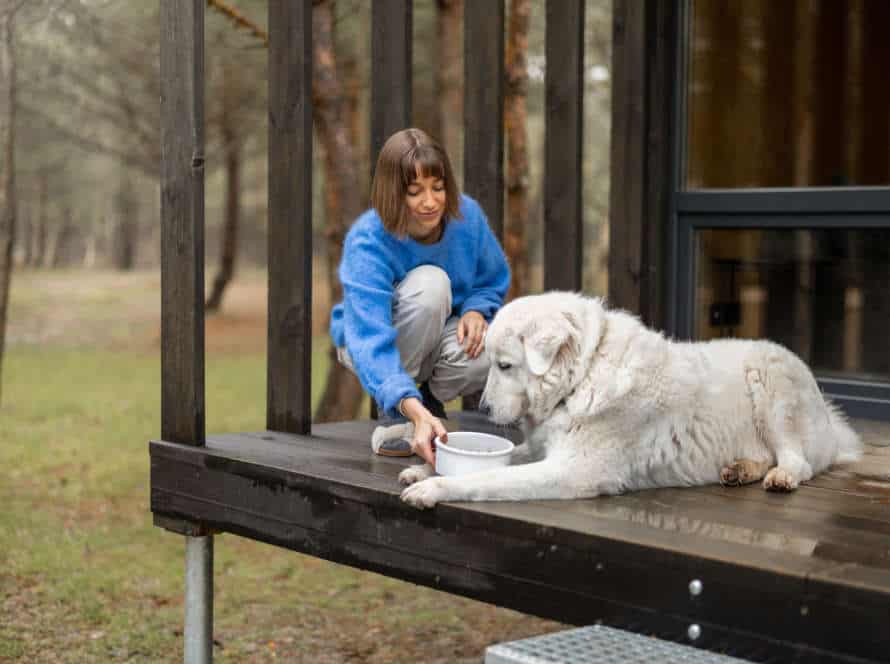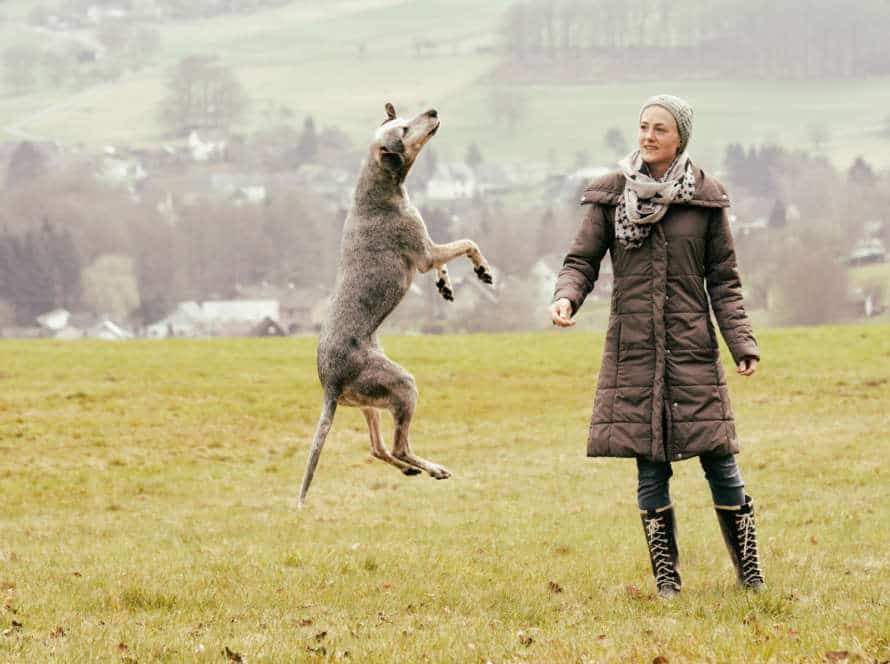A Dog Owner’s Guide to Selecting the Right Dog Food
Choosing the perfect pup chow is key to making your four-legged companion feel great and content. Here are some things to think about before you buy:
- Age & size: Puppers and adult doggos have different dietary needs, and bigger breeds need different ingredients than their smaller bros.
- Activity: High-energy hounds need lots of protein and fat in their grub.
- Health conditions: Got a pup with allergies, sensitivities, or health concerns like diabetes? You’ll need to pick a specialized diet.
- Ingredients: Check for quality protein sources, healthy fats, and whole-food stuff like fruits, veggies, and grains.
- Food type: Do you want dry kibble or wet food? Both have pros and cons.
- Brand: Research the brand and make sure it’s got good reviews and a history of quality products.
By taking these into account, you can pick the right dog food for your pup’s desires and requirements. Pro tip: Talk to your vet for tailored advice based on your pup’s health and lifestyle.
Understanding Your Dog’s Nutritional Needs
Before selecting a brand of food for your pooch, it is essential to grasp their dietary requirements. Every dog is unique and what suits one, might not suit another. To pick the right food, be aware of your pup’s breed, age and size. Furthermore, researching the available types of canine food will aid in making the best decision for your furry friend.
Different types of dog food options
Selecting the right dog food can be tough. There are four types to pick from. Which one you choose depends on your pup’s needs, diet, and lifestyle.
- Dry Dog Food: This is popular due to its convenience and long shelf life.
- Wet Dog Food: Good for dogs needing extra moisture.
- Semi-Moist Dog Food: Soft, chewy, easy to store and serve.
- Homemade Dog Food: Control the ingredients. Great for specific diets.
Consult a vet to get your pup’s nutritional needs figured out. Then choose the right food!
Understand your dog’s dietary restrictions and preferences
As a dog owner, it’s essential to know your pup’s food restrictions and tastes. To give them the nutrition they need, here are some tips:
- Understand the breed and age of your dog. Different breeds and ages have different nutrition needs.
- Check for allergies. If your dog has any, choose food that caters to their specific dietary requirements.
- Choose high-quality protein sources. Meats like chicken, beef, or turkey make great main ingredients.
- Avoid fillers and artificial preservatives. Look for natural preservatives instead and avoid fillers like wheat, corn, or soy.
- Lastly, consult a vet or canine nutritionist to select the best food for your dog’s health.
Importance of balanced nutrition for your dog
Providing your doggo with balanced nutrition is vital for their overall health and well-being. Protein, carbs, fat, vitamins, and minerals must be in the right mix for healthy bones, muscle, skin, and fur. Here’s why balanced nutrition is essential for your pup:
- Can prevent medical conditions and help them live longer.
- Gives the right amount of energy and nutrients needed daily.
- Aids in keeping a healthy weight and lowers the risk of obesity.
- Improves brain function and cognitive abilities.
Select high-quality dog food containing all the necessary nutrients. Consider their breed, age, activity level, and any special dietary needs. Talk to your vet before changing their diet significantly.
Pro Tip: Don’t forget fresh food choices like meat, fish, and veg to supplement their diet – they provide essential nutrients.
Analyzing the Dog Food Label
Selecting the right food for your pup is key. Look closely at the food label – it’s full of essential info about your dog’s nutrition. Read it carefully; make sure your beloved pet is getting what they need! Let’s explore the components of the dog food label.
AAFCO dog food nutrient profiles
The Association of American Feed Control Officials (AAFCO) created dog food nutrient profiles. These guarantee that commercial dog food satisfies a dog’s dietary needs throughout various life stages. The three AAFCO nutrient profiles are:
- Adult Maintenance: Minimum nutrition for grown dogs.
- Growth and Reproduction: Additional nutrition for puppies, pregnant/lactating females, and breeding males.
- All Life Stages: Minimum nutrition at any life stage.
Pet owners must consider their dog’s age, breed, and health conditions when selecting the right food. They should also read the label to make sure the ingredients meet their pup’s nutritional needs according to the AAFCO rules.
Reviewing the guaranteed analysis of dog food ingredients
As a dog owner, it’s key to understand the guaranteed analysis of dog food ingredients to give your pooch the best nutrition. The analysis shows the percentage of protein, fat, fiber, and moisture.
When examining, look for:
- High-quality protein sources e.g. meat, fish, and eggs.
- Essential fatty acids, like omega-3 and omega-6, which support skin and coat health.
- A balanced nutrient ratio for your dog’s age, size, and activity level.
- Moisture content – impacts overall nutritional value and shelf-life.
Remember to talk to your vet before changing your dog’s diet. Think about any special dietary needs they might have.
Identifying filler ingredients vs. beneficial ingredients
As a pet parent, it is important to tell the difference between filler ingredients and healthy ingredients in your pup’s food. Filler ingredients are usually low-quality and have not much nutritional value. Examples are wheat, corn and soy.
Beneficial ingredients, on the other hand, are high-quality and provide essential nutrients. These include proteins like chicken or beef, plus fruits, vegetables and healthy fats.
Check the label of your pup’s food – look for quality ingredients in the first few items. Also, avoid food with lots of filler ingredients, artificial preservatives or colors as they can be bad for your pup’s health.
Treat your pup right – give them a healthy diet for a happy and healthy pup!
Considerations for Specific Dog Breeds
Choosing food for your pup is more than picking something cheap. Depending on the breed, there can be special needs that need more thought. Different breeds, personalities and activity levels can impact the best food choice. Let’s think about what needs to be taken into account when deciding on food for the particular breed.
Small breed dog food recommendations
Small breed pups have special dietary needs. Here are five of the best small breed dog food recommendations to keep your pup healthy and happy:
- Blue Buffalo Life Protection – High-quality protein, grains, and veggies.
- Wellness CORE – Turkey and chicken, plus veggies and antioxidants.
- Taste of the Wild – Grain-free with real roasted meat and veg.
- Merrick Lil Plates – Grain-free, with deboned chicken for lean protein.
- Royal Canin – Breed-specific formulas for unique nutritional needs.
When selecting the right dog food, consider age, activity level, weight and health conditions.
Large breed dog food recommendations
Choosing the best food for your big dog is key to their overall health. Feed them top quality grub with high protein, packed full of nutrition, and large kibble. We’ve got 3 options for you to try:
- Purina Pro Plan Large Breed – Real chicken is the main ingredient. This food is complete and supports muscle and joint health. Kibble size prevents choking and encourages chewing.
- Blue Buffalo Life Protection Large Breed – Real chicken and brown rice with no preservatives, soy or wheat. Helps support teeth and gums, plus antioxidants for their immune system.
- Hill’s Science Diet Large Breed – High-protein and glucosamine for muscle growth. Chondroitin for joint health. Kibble size slows down speedy eaters and aids dental health.
Talk to your vet for specific advice for your dog breed, to ensure they get the best nutrition.
Breed-specific nutritional requirements
Dogs have distinct dietary needs. It’s important for owners to pick the best food for their pup’s breed. Here are some things to consider when choosing dog food:
- Large breeds like Great Danes and Mastiffs need diets high in calcium and phosphorus to help their bone growth.
- Small pups like Chihuahuas and Yorkies have faster metabolisms, so they need nutrient-dense food to keep up with their energy needs.
- Miniature Schnauzers, Cocker Spaniels, and Yorkshire Terriers are prone to pancreatitis, so avoiding high-fat diets is key.
- Pugs and Bulldogs have dental issues, so softer food is necessary to avoid harming their teeth and gums.
By taking into account breed needs, you can find the perfect food and keep your pup healthy.
Special Dietary Needs for Dogs
Need a food for your pup? Consider your pet’s dietary needs. No two dogs are alike! Diet can vary depending on the pup’s needs. Learn what’s best for your dog. Necessary to keep ’em healthy!
Let’s review the unique dietary needs of pups.
Digestive health and food sensitivities
When it comes to your pup’s food, understanding their digestion and sensitivities is important. Dogs with special dietary needs need special diets! Here are some tips:
- Identify if your dog has allergies to certain ingredients.
- Choose dog food with high-quality protein sources like chicken, beef or fish.
- Avoid fillers like wheat, soy or corn. They can cause tummy trouble.
- Look for food with probiotics and prebiotics to help digestion.
- Ask your vet for advice on brands or types of food to fit your pup’s needs.
Your pup’s health depends on the right diet. Knowing their digestion and food sensitivities is key!
Senior dog dietary considerations
As dogs age, their nutritional needs change. Senior pooches need special diet considerations for optimal health. Here are a few to think about:
- Protein: Senior dogs need moderate amounts of protein to maintain muscle mass. Choose lean meats or fish for quality sources.
- Fats: Older dogs may need fewer calories and healthy fats, like omega-3s from fish oil or flaxseed oil, to support their cognitive and cardiac health.
- Fiber: Constipation can become an issue, so add more fiber through food, supplements, or fresh fruits/veggies.
- Joint Support: Senior dogs are prone to arthritis. Add glucosamine, chondroitin, and MSM to foods to reduce inflammation and provide joint support.
By considering these dietary needs, you can help your senior pup live a happy and healthy life!
Overweight and weight management dietary recommendations
To manage weight & overweight issues for your dog, dietary recommendations depend on their individual lifestyle. A balanced diet with fewer calories can help in weight loss. Here are a few tips for their special dietary needs:
- Check their current diet for calorie intake.
- Pick a high-protein, low-fat dog food.
- Select food made for weight management.
- Offer smaller, more frequent meals.
- Add vegetables & fruits to their food.
- Cut back or stop treats as they are high in calories.
- Ensure they get enough exercise.
By making these changes, your dog can lose or maintain weight, improving their health & happiness.
Choosing the Best Dog Food
Deciding on the correct dog food is a big choice all pet owners must make. It’s hard to pick what to feed your pup, so it’s vital to take time to research the many kinds of dog food accessible and grasp your dog’s nutritional requirements.
In this guide, we’ll talk about the different things to think about when deciding the most suitable food for your dog:
- The different kinds of dog food available.
- Your dog’s nutritional requirements.
Researching brand and product reviews
Researching dog food is a must for all dog owners. To make the best choice, you should learn about the quality, ingredients and experiences of other dog owners. Here are tips to keep in mind:
- Look for reliable sources like vet websites or pet publications.
- Check the ingredient list for high-quality sources of protein and nutrients.
- Look for brands with a good reputation.
- Think about your dog’s needs and health conditions.
- Read reviews and testimonials from other dog owners.
By researching, you can make an informed decision that’ll benefit your pup’s health and happiness.
Persevering with different types of dog food
Selecting the proper dog food for your furry mate can be tough! With multiple choices, it’s difficult to pick the right one. Fortunately, there are some basic steps to get the best food for your pup. Here are some tips:
- Take into account your pup’s age, size and breed. Different pups have diverse nutritional needs, so it’s essential to select dog food that meets them.
- Study the ingredient list carefully. Look for high-quality, whole food ingredients like meat, fish, veggies and fruit. Shun foods that contain fillers, by-products, and artificial preservatives.
- Be patient and consistent. It may take some trial and error to find the best dog food for your pet. Keep trying different brands or types of food till you locate the one that works for your furry mate.
Choosing the most cost-effective dog food option for your budget
Finding the right dog food that fits your budget can be tough. But, research can help you find a cost-effective option. Here are some to consider:
- Dry Kibble: This is the least expensive per serving plus it’s easy to store. Look for brands with high-quality protein sources, whole grains and no fillers or artificial preservatives.
- Homemade Meals: Making meals at home can be cheaper than pre-packaged food. Talk to your vet for essential nutrient requirements.
- Wet Food: Wet food comes with lots of flavors and textures. But, it is more costly and spoils faster, meaning it increases the overall cost.
- Combo Feeding: Mix dry kibble with wet food for a balanced diet, plus it satisfies your dog’s appetite at a lower cost.
Always choose food that provides balanced and appropriate nutrients for their age, breed and activity level. Consult with your vet for best results.
Frequently Asked Questions
Q: How do I know what type of dog food my dog needs?
A: The best way to determine what type of dog food your dog needs is to consult with your veterinarian. They can help assess your dog’s age, weight, activity level, and any health concerns to recommend the appropriate type of food.
Q: Is it safe to feed my dog a raw-food diet?
A: Raw-food diets can be risky, as they can have harmful bacteria, such as Salmonella, E. Coli, and Listeria. Also, raw diets could cause nutritional deficiencies. Always consult with your veterinarian before switching to a raw-food diet.
Q: What is the best way to transition my dog to new food?
A: The best way to transition your dog to a new food is to gradually increase the new food while decreasing the old food over a period of 7-10 days. A sudden change can cause digestive upset, so it’s essential to do it gradually.
Q: Can my dog be allergic to certain food ingredients?
A: Yes, dogs can develop allergies to certain food ingredients. The most common food allergens for dogs include beef, dairy, wheat, egg, chicken, lamb, soy, pork, and fish. If your dog develops any symptoms like skin rashes, itching, or gastrointestinal upset, consult your veterinarian.
Q: Are grain-free diets better for my dog?
A: There is no scientific evidence that grain-free diets are better for dogs than those that contain grains. In fact, some grain-free diets have been linked to heart disease in dogs. Always consult with your veterinarian before making any dietary changes for your dog.
Q: What should I look for in the ingredients list when choosing dog food?
A: Look for high-quality animal protein sources, like chicken, beef, or fish, as the main ingredient. Avoid foods with by-products, artificial preservatives, and colors. Also, check for the carbohydrate and fat content, as well as the calorie count, to ensure it meets your dog’s nutritional needs.







